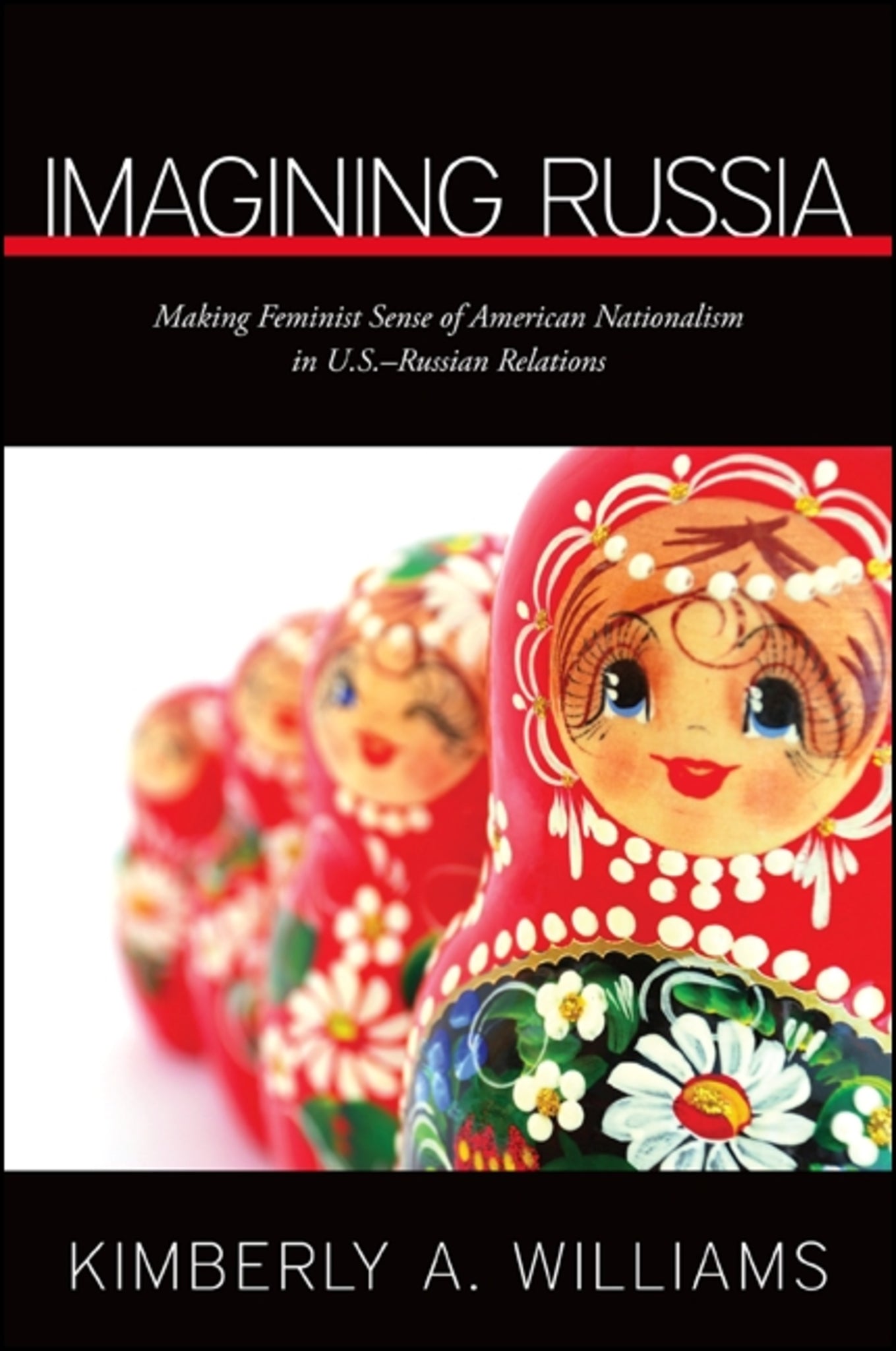We're sorry. An error has occurred
Please cancel or retry.
Imagining Russia

Some error occured while loading the Quick View. Please close the Quick View and try reloading the page.
Couldn't load pickup availability
- Format:
-
01 April 2012

A bold work of feminist international relations that contributes to our understanding of the gendered, racialized, and heteronormative dynamics of U.S. foreign policy, both in relations with Russia and in the invasion of Iraq.
Co-winner of the 2009 SUNY Press Dissertation/First Book Prize in Women's and Gender Studies, Imagining Russia uses U.S.–Russian relations between the fall of the Soviet Union in 1991 and the U.S.-led invasion of Iraq in 2003 as a case study to examine the deployment of gendered, racialized, and heteronormative visual and narrative depictions of Russia and Russians in contemporary narratives of American nationalism and U.S. foreign policy. Through analyses of several key post-Soviet American popular and political texts, including the hit television series The West Wing, Washington D.C.'s International Spy Museum, and the legislative hearings of the Freedom Support Act and the Trafficking Victims Protection Act, Williams calls attention to the production and operation of five types of "gendered Russian imaginaries" that were explicitly used to bolster support for and legitimize U.S. geopolitical unilateralism after the dissolution of the Soviet Union, demonstrating the ways that the masculinization of U.S. military, political, and financial power after 1991 paved the way for the invasion of Iraq in 2003.


"Williams has written a masterful look at the gendered rhetoric produced in the West (and sometimes by Russians themselves) to describe post-Soviet Russia in the aftermath of the Cold War … Highly recommended." — CHOICE
"This is an outstanding book and an excellent example of feminist IR analysis. The thesis and objectives are to show the ideological causes of (asymmetrical and deteriorating) U.S.–Russian relations, which Williams convincingly argues are rooted in gendered understandings." — Valentine M. Moghadam, coeditor of Making Globalization Work for Women: The Role of Social Rights and Trade Union Leadership
List of Figures
Acknowledgments
Introduction: Imagining Russia
Foundational Precepts
Implications and Interventions
1. The Geopolitical Traffic in Gendered Russian Imaginaries
Gendered Russian Nationalism
Gendered American Nationalism
Russia and Russians in a U.S. Context
U.S. Foreign Policy and the Triumphalist Mythscape
2. Freedom for Whom? Support for What?
Provisions and Objectives
Implementation
Capitalism as "Freedom"
Imaginaries at Work
Russia as Child/United States as Great, White Father
Russia as Student/United States as Tutor
Russia as Frontier/United States as Entrepreneurial Pioneer
Russia as Pathologically Ill Patient/United States as Doctor
Russia as Retrogressive Baba/United States as Responsible Superpower
Imperial Masculinity
3. Death and the Maiden
Conjuring the Ghost
Anastasia on Stage and Screen
A Reflection of U.S.-Russia Policy
Reckoning with the Ghost
4. Crime, Corruption, and Chaos
American Heroes
Russian Victims and Villains
With Impunity: The United States as Innocent Bystander
From Mother Russia to Miss Russia
5. "It’s a Cold War Mentality"
The West Wing and U.S. Political Culture
Gendered Discursive Configurations
Vassily Konanov as Boris Yeltsin: "Our Kind of Crazy"
Cold War Holdouts
Peter Chigorin as Vladimir Putin: Barlet’s Last Best Hope
Whose Cold-war Mentality?
6. Cultural Politics of Cold War
A Cold-war Museum
Atomic Secrets
The Rosenbergs as Discursive Phenomena
The Rosenbergs at the International Spy Museum
Origins of State-based Terror
Heterosexpionage
The Cold War as Cautionary Tale
Conclusion: Casualties of Cold War
Russia’s Geopolitical Resurgence
Competing Masculinities
Obama’s "Reset"
Appendix
Notes
Bibliography
Index



